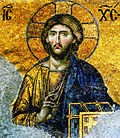The second part of Churches (Chap.3)
(Sardis, Philadelphia and Laodicea).
Sardis: – the dead church: (3:1-6)
The church of Thyatira tolerated sin, but the Church at Sardis was dead to sin. The spiritual darkness of false teaching and sinful living had extinguished the light of life. The description of the Lord for each of 7-churches are drawn from the vision of (1:12-17). Here the Lord says “Seven Spirits”.” Christ’s introduction of Himself did not hint at the severity of the situation as mentioned for other churches, although the church at Sardis was facing imminent divine judgement.
History:(3:1a): The church at Sardis probably founded as an outreach of Paul’s ministry at Ephesus (Acts.19:10). The letter does not speak of persecution, false doctrine, false teachers or corrupt living. Yet some combination of those things was obviously present in Sardis, since the church had died. If the church had persecution or trials, it would have been better off. This Church is a reflection of the some of the churches during (1520-1750) A.D.
Melito of Sardis (died AD 180) was the bishop of Sardis near Smyrna in western Anatolia, and a great authority in Early Christianity: He was an apologist, a defender of Christianity, who served as bishop of Sardis in the late 2nd century. He also wrote the earliest known commentary on passages from Revelation. Jerome, speaking of the Old Testament canon established by Melito, quotes Tertullian to the effect that he was esteemed a prophet by many of the faithful. His feast is celebrated on April 1.

Melito
Ancient Sardis, the capital of Lydian kingdom, was a most important city, founded about 1200 BC. It lay about 50- miles east of Ephesus at the junction of five main roads and 30-miles south of Thyatira in the fertile valley of Hermus River. So it was a centre for trade. It was also a military centre, for it was located on an almost inaccessible plateau of about 1,500-feet above the main roads, and it formed an impregnable fortress. Its seemingly indestructible location caused the inhabitants of Sardis to become overconfident. Due to their carelessness, Sardis was conquered by Cyrus king of Persia. Sardis eventually came under Roman control in 133 BC. Twice in its long history, the citadel at Sardis had been captured, each time because sentries had failed to do their jobs faithfully. In the same way, when the church’s leaders and members get accustomed to their blessings and complacent about their ministry that the enemy finds his way in. There was an earthquake in 17 AD, but it was rebuilt. The news of its downfall sent shock waves through the Greek world. Sardis city had many hot springs. The main religion in the city was the worship of Artemis, one of the “nature cults” that built on the idea of death and rebirth.
In John’s days, Sardis was prosperous, but the church was decaying.
Appreciation:(3:1b, 2):Within this dead church, a few true Christians were scattered like flowers in a desert. They were not enough to change Christ’s overall evaluation of the church. Yet the Lord has not forgotten those who remained faithful to Him (Mal.3:16-17). He referred them as those who “have not soiled their garments.” The words were familiar because Sardis had a wool dyeing industry. Garments symbolized character in scripture (isa.64:6). “They will walk with Me in white, for they are worthy.” Christ promises the white robes of purity.